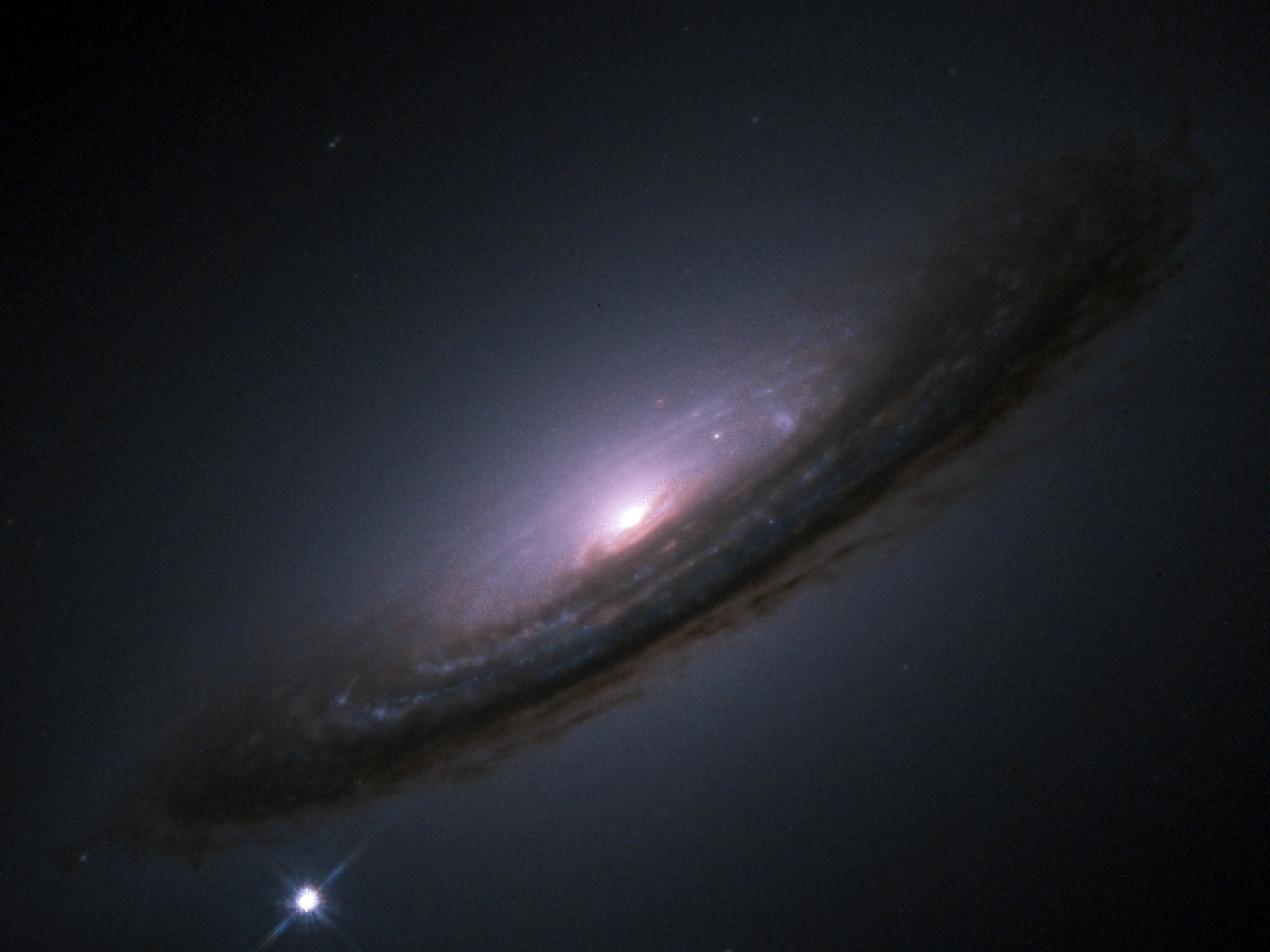An Ancient Voyage
Earth is on a journey…
While our planet orbits the Sun each year – a billion kilometers – our entire Solar System is drifting through the Milky Way Galaxy making one rotation every 225-250 million years (that means dinosaurs actually lived on the other side of the Galaxy!) Humanity has been on Earth for a small fraction of that journey, but parts of what we’ve missed is chronicled. It is written into the rock and life of our planet by the explosions of dying stars – supernova. Turns out supernovas write in radioactive ink called Iron-60.

As the Sun travels through the Galaxy, so too do the hundreds of billions of other stars that comprise the Milky Way; all swirling and spiraling in varying directions. If you could time travel to a distant past, you’d look up and see an unfamiliar sky – different stars, different constellations, and sometimes the glow of a brilliant supernova. Stars explode in the Milky Way about once every fifty years. Given the immense size of the Galaxy at around 150,000 light years in diameter, the odds of one of those stars exploding in our backyard is low. But while supernova happen in the Galaxy twice a century, those in close proximity to Earth, within 400 light years, do happen once every few million years. And along Earth’s epic 4.5 billion-year journey, it appears that we’ve had close encounters with supernova several times. In fact, we seem to be travelling through the fallout cloud of supernovae right now.
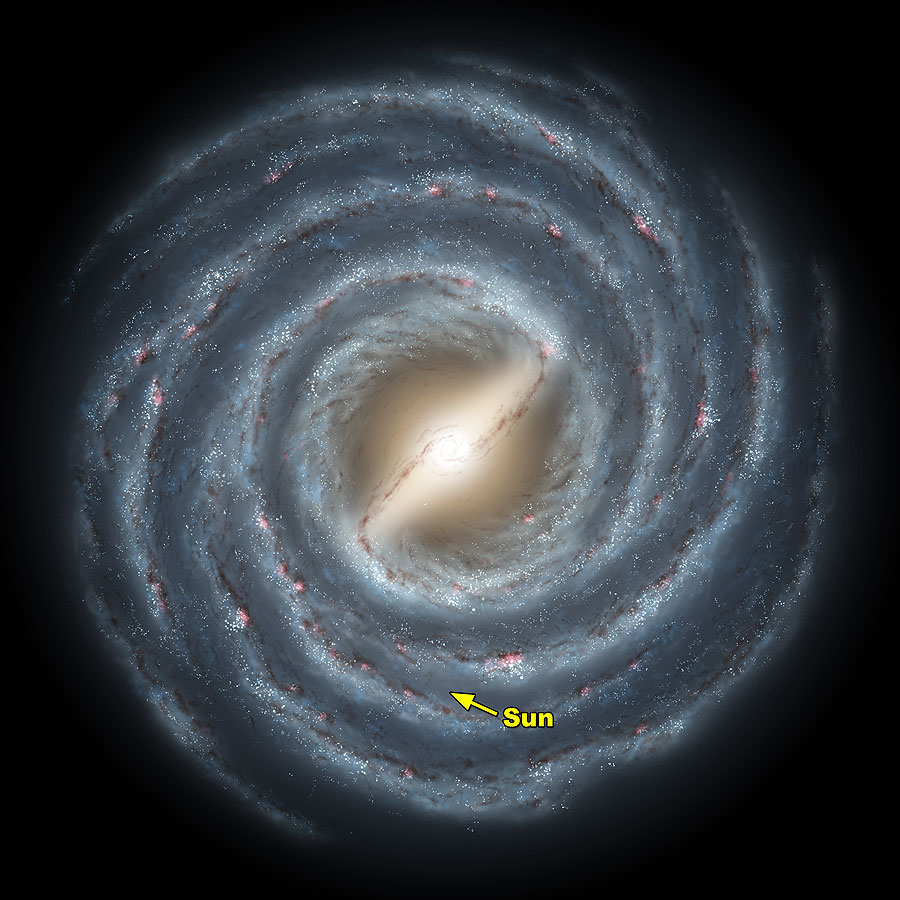
A Hole in the Galaxy
Supernova shape the galactic landscape that the Earth and Solar System travel through. We typically think of the space between stars as a void – an empty vacuum. But there is incredibly diffuse gas and dust drifting between stars called the Interstellar Medium (ISM). Where Earth’s atmosphere has thousands of trillions of particles per cubic centimetre, the ISM can be as low density as a few dozen particles per cubic meter. Despite being so diffuse, we can measure variations in the ISM by comparing light from similar stars. If we know two stars are similar enough that they should share the same brightness, but one appears dimmer than another, we can infer it is being seen through more dust and gas in the medium which absorbs some of the light from the star – a process called “dust extinction.” By observing local stars, we see sharp rises in dust extinction in a region surrounding our Solar System and have mapped out the boundaries of an enormous low(er)-density bubble or cavity in the ISM referred to as the “Local Bubble.” That cavity was carved out by the powerful shockwaves of ancient supernova – and we are inside of it.
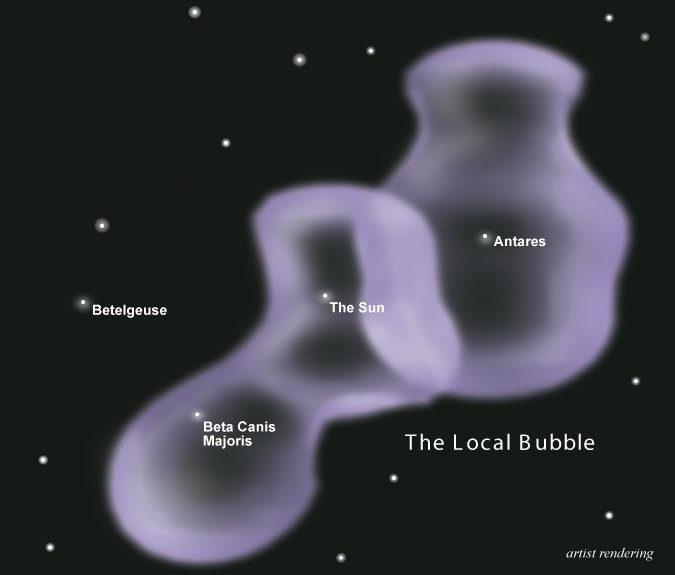
400 light years away from Earth is a group of stars called the Scorpius-Centaurus OB Association (Sco-Cen). Associations are groupings of stars that formed together in star-birthing nebular clouds of dust and gas. The largest stars in the association are class O and B stars – many times more massive than our Sun and very short lived on the order of a few million years before exploding as supernova. (By comparison, our Sun is already 4.6 billion years old.) Within Sco-Cen lies the famous red giant star Antares located in the constellation Scorpius seen in Summer night skies. In 1997, the European Space Agency released one of the first comprehensive catalogs of star positions and motion through the Galaxy relative to Earth using the Hipparcos Satellite. With this data, we could literally rewind our journey to determine that our Solar System was closer to Sco-Cen 5-7 million years ago. During that time, several supernova in Sco-Cen likely created the low density Local Bubble which now envelops us extending over 400 light years from the Sun. Bubbles like this can last for tens of millions of years before being refilled by the mixing and churning of the ISM. Our Solar System has been in the Local Bubble itself for several million years.
Chroniclers of Iron
Beyond the holes blasted out of the Milky Way, supernova also left marks on our own world. That story isn’t written up in the sky, but rather on the bottom of the ocean. Millions of years ago, ancient bacteria on the ocean floor were creating magnetic crystals that they use to align with the Earth’s magnetic field. Imagine bacteria assembling tiny compasses using iron particles to find their way around. In the ocean depths, these “magnetotactic bacteria” began to encounter Iron-60, a radioactive isotope of Iron which we only know to be created by an exploding star. The fossilized remains of these bacteria, containing Iron-60, can be found in sedimentation in the ocean dating back between 1.7 to 3.3 million years ago. Their discovery marked the first biological indicator of Earth’s contact with supernova debris in the ancient past. Likely the Earth was dusted with this material when it passed through the remnants of a supernova originating in the Sco-Cen Association.
Dr. Anton Wallner, nuclear physicist at Australia National University Research School of Physics and Engineering, has been leading research on Earth’s deposits of Iron-60 which he notes are “a million-billion times less abundant than the iron that exists naturally on Earth.” And yet, Iron-60 deposits have been found all over the world. Dotted throughout the Local Bubble carved out of the ISM, there are some denser regions or clouds thought to be made up of remaining material from the supernovas themselves which contain Iron-60. Iron-60 has a half-life of 2.6 million years fully decaying in 15 million so any traces of the isotope had to be created and deposited on Earth within that period which coincides to when Earth was within the Local Bubble. Earth likely passed through these clouds of debris in the past leading to Iron-60 raining onto our planet and into the oceans. But while ancient supernova debris is falling to Earth, not all of it fell in ancient times. In fact, Antarctic snows revealed Iron-60 that landed on Earth within the last 20 years. Supernova debris is falling on Earth right now meaning we may currently be passing though one of those debris clouds seeded throughout the Local Bubble…called the Local Cloud.
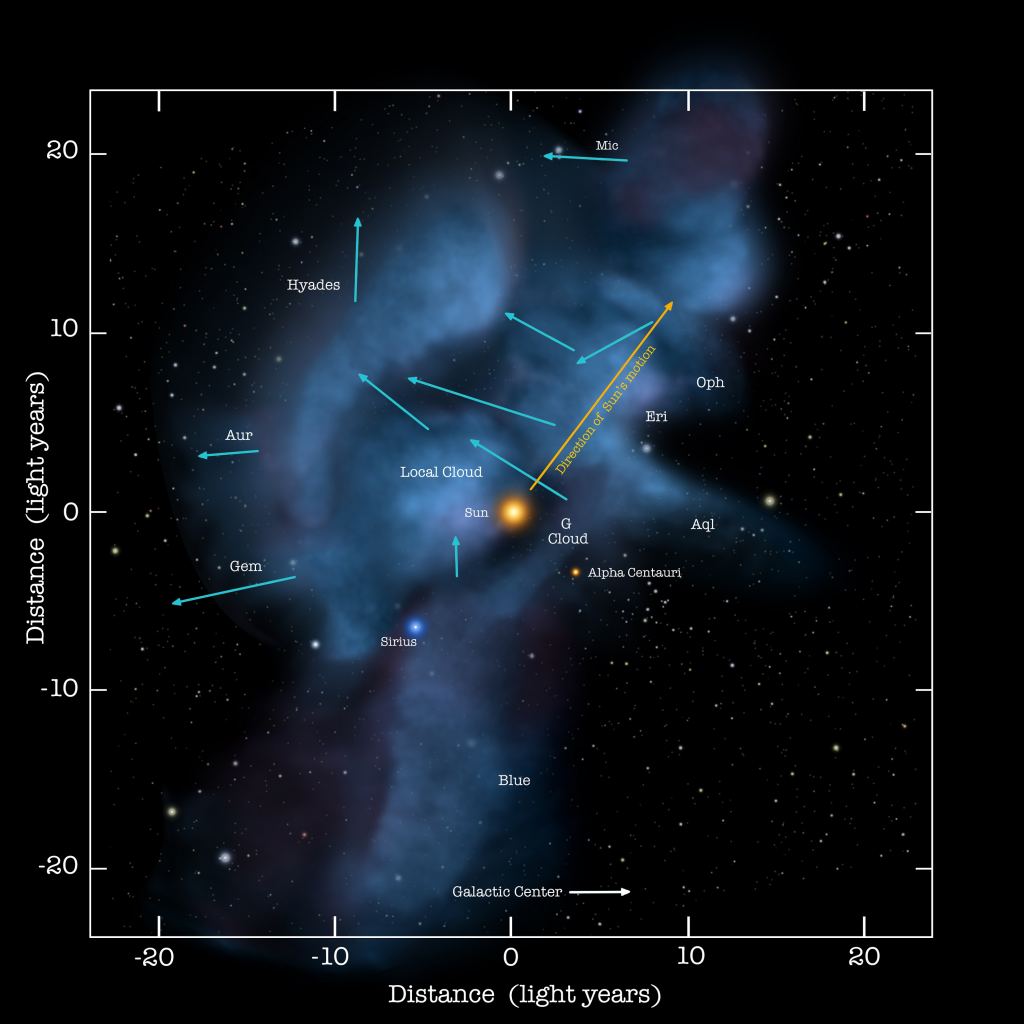
Cosmic Clouds and Stellar Shields
Wallner’s most recent research is trying to estimate how long Earth has been passing through the Local Cloud – likely on the order of a few millennia. Looking back millions of years means digging into the ocean floor to sediment depth of 400-700cm (keep in mind that is under 4.2km of water) where the ancient Iron-60 deposits were found. But looking back tens of thousands of years means only the top 13cm. Here Wallner reports the “…continuous detection of interstellar Iron-60 influence on Earth over the past 33,000 years.” In other words, for at least that length of time, we seem to be passing through ancient stellar guts. The debris’ origin is not entirely clear but possibly also originates from the same Sco-Cen Association. 33 millennia seems like a long time to fly through the remnants of a dead sun, but if the whole Earth’s journey through the Galaxy were compressed to a 10 hour road trip, we would’ve driven through this patch of “fog” in a quarter of a second.
Only a small fraction of debris in the ISM reaches the inner solar system, on the order of 3-6%. The rest is deflected by our own version of a cosmic windshield, the Heliosphere, a (relatively) small sphere of energy localized to just our Solar System created by the Sun. In August of 2012, Voyager 1, the farthest human-made object out in the Universe, left the Heliosphere entirely and entered interstellar space. The Heliosphere acts as natural shield around our system protecting us from stellar debris and high energy cosmic rays that could be harmful to life. In fact, it is theorized that proximity to past supernova may have resulted in mass-extinction events on Earth. Understanding our position relative to stellar gas/dust clouds is important because contact with them changes the shape and diameter of the heliosphere which may allow a greater percentage of debris and cosmic energy to enter the inner solar system.
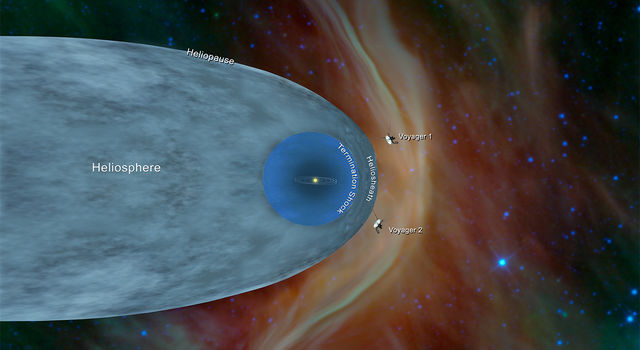
Earth is on a journey, and we’re a part of that journey. We may not have been around for the whole ride, but we have life on the planet and the Earth itself to tell us where it’s been. The night sky may seem static from a human perspective, but it is dynamic and filled with stories. When our own story overwhelms us, I like to gaze upward and wonder what the night sky would look like a billion years ago and know that the Earth would still be there under my feet. Who might be standing in that same spot in a billion years to come and what sky will they see?
More Reading:
Ocean Sediments Reveal Nearby Supernovae Mystery – ANU
Supernovae Showered Earth with Radioactive Debris – ANU
Observatory of Iron-60 Nucleosynthesis-clock Isotope in Galactic Cosmic Rays
Supernova Left its Mark in Ancient Bacteria – Nature
Iron-60 in Deep-Sea Manganese Crust – APS
Evidence for Supernovas Near Earth – NASA
The Origin of the Local Bubble – Astrophysical Journals
Interstellar Iron-60 in Antarctica – Harvard

